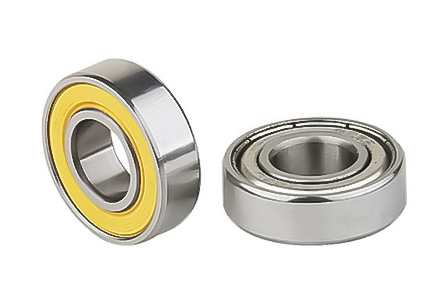Summary:Deep Groove Ball Bearing
The Deep Groove Ball Bearing is one of the most common types of bearings used in household app...
Deep Groove Ball Bearing
The Deep Groove Ball Bearing is one of the most common types of bearings used in household appliances. These bearings offer excellent lubrication and long service life. Single row deep groove ball bearings are available with and without seals. Contact and non-contact seals are available. Read on for more information about Deep Groove Ball Bearing. Listed below are some of the advantages and disadvantages of this type of bearing.
The radial force Fr exerted on the inner ring of a Deep Groove Ball Bearing causes displacement of the inner ring. The radial force of the outer ring forces the inner ring downwards, squeezing the rolling balls. The resulting contact deformation causes the radial force Fr to shift down. The inner ring squeezes the rolling balls, causing contact deformation.
In order to prevent slippage, the radial clearance of Deep Groove Ball Bearing must be large enough to accommodate a sufficiently high load. This load is typically greater than the minimum required. The closed RRP maintains a constant axial width. In general, the radial clearance of Deep Groove Ball Bearings is about one inch. Deep Groove Ball Bearings have many benefits, including improved lubrication, reduced maintenance, and greater reliability.
Generation C Deep Groove Ball Bearings offer improved performance and cost compared to single row standard Deep Grease Ball Bearings. Generation C Deep Groove Ball Bearings feature improved dimensional stability. Their patented Schaeffler Noise Index enables users to select the most appropriate Deep Groove Ball Bearing for their application. It is also available in extra large sizes. You can find Deep Groove Ball Bearing in almost every household appliance.
Noise is the primary cause of wear in Deep Groove Ball Bearings. Noise emitted by these bearings depends on the wave number, which changes non-linearly with irregular ways. The wave number of Deep Groove Ball Bearings is usually five or nine. A wave number of five or nine can make a bearing produce more noise than five times the normal one. This noise is a common problem in most systems, but it can also be avoided by choosing a better Deep Groove Ball Bearing.
The Deep Groove Ball Bearing is a common type of bearing used in several different industries. It consists of an inner ring and an outer ring. Its flat outer ring is designed to provide a larger area of contact. Deep Groove Ball Bearings are available in hundreds of different sizes and shapes and are available in many materials. Deep Groove Ball Bearings are highly versatile. For example, they are excellent for applications that require high precision and durability.
Deep Groove Ball Bearings are commonly used in industries and can handle high speeds. The low friction design of these bearings helps them meet the demands of industrial machinery, such as machinery for the construction industry. However, their low damping characteristics can create reliability problems, which can be devastating. This issue should be addressed during the design phase. However, there are some specific properties of Deep Groove Ball Bearings that should be considered before purchasing them.


